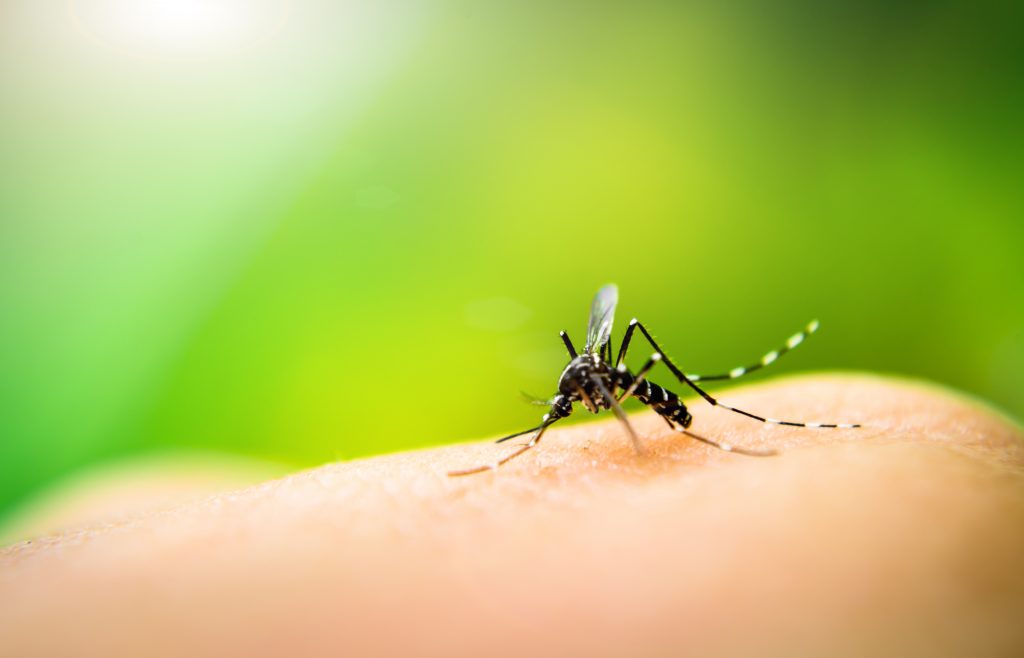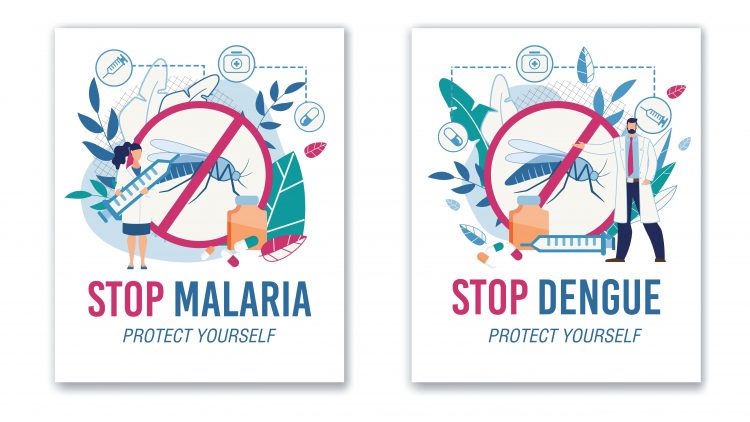Two of the biggest health threats in the whole world—malaria and dengue—are brought about by one of the smallest insects: mosquitoes. While those two are already considered common health issues, they still pose huge threats to patients. When left to progress, malaria and dengue can be fatal which increases the need for prevention, in the forms of vaccination and mosquito repellent, and treatment. For countries where both dengue and malaria continue to be classified as endemics, they can be a cause for public concern, thus, they should be given special attention.
One of the misconceptions about malaria and dengue, however, is that they’re one and the same. In fact, while both are caused by mosquitoes, they have differences and varying distinguishing factors. It’s important to know what these are so that once your symptoms start to show, you’re accurate in your determination as to whether or not what you have is, in fact, malaria or dengue.

The Mosquitoes That Transmit Malaria And Dengue
One of the main differences between malaria and dengue has to do with the types of mosquitoes that transmit them. In fact, the mosquito carriers of the two diseases aren’t even remotely similar to each other.
Malaria is transmitted by a female Anopheles mosquito, which generally bites at night. The mosquito transmits to the body a type of parasitic protozoa known as plasmodium.
On the other hand, dengue is transmitted to human beings by the female Aedes mosquitoes. These mosquitoes generally bite during daytime or at dusk.
The Kinds Of Diseases Transmitted
Another distinct difference between malaria and dengue is that the former is an infectious disease or a bloodborne infection brought about by a parasite, while the latter is a viral infection.
As the Anopheles mosquito injects the parasite through its salivary glands to the human body, the affected human now becomes infected. That’s when the parasites start its life cycle and begins to mature in the human being.
When talking about dengue, the Aedes mosquito infects human beings with the dengue virus (DENV). When the person is bitten, they develop what’s known as viremia, or a condition wherein the blood contains high levels of the dengue virus.
The Differences In The Symptoms
Some of the symptoms of dengue and malaria may be the same, but there are also inherent differences between both.
- Symptoms Of Dengue
Generally, dengue symptoms may also differ according to the age of the person. The most common starting point, however, is fever, which starts to manifest on the first four to seven days after the mosquito bites the infected person. Some of the other common symptoms include:
- Diarrhea;
- Severe joint and muscle pain
- Nausea and vomiting
- Severe headache
- Rashes on the stomach, back, and chest
- Symptoms Of Malaria
The symptoms of malaria, on the other hand, can generally be divided into two categories: uncomplicated malaria and severe malaria.
- Uncomplicated Malaria
- Sweats, coupled with tiredness or fatigue
- Chills
- Seizures
- Headache
- High fever
- Severe Malaria
- Fever accompanied by chills and shivers;
- Jaundice
- Impaired consciousness
- Signs of anemia
- Deep breathing and other respiratory distress.
The Differences In Preventive Measures
As this article has now established the fact that dengue and malaria are, in fact, very different from each other, it also follows that the preventive measures differ. It’s important, however, to consolidate all preventive measures for both mosquito types if you live in a country where both diseases are also endemics. There’s not one mosquito disease that’s worse than the other, and you should always strive to prevent the onset of both.
Below are some of the preventive measures for each of the said diseases.
- Preventive Measures For Dengue Fever
- Avoid going to places with stagnant water, especially during dusk and dawn.
- Keep your body covered with a sleeved shirt and long pants.
- Don’t keep stagnant water around your home.
- Use a mosquito repellant.
- Preventive Measures For Malaria
- Keep the surrounding areas garbage-free.
- Cover your arms and legs.
- Empty stagnant water.
- Wear light-colored clothes.
- Use mosquito nets when sleeping in an open space.
Conclusion
With the information above, now you can be more confident when it comes to distinguishing whether what you may be experiencing is malaria or dengue. Everything you’ve read above, however, isn’t meant to be a substitute for sound medical advice. When your symptoms start to show, it’s important to see a doctor immediately. By doing so, proper medication and treatment can be given. If there’s any similarity between both, dengue and malaria can be fatal diseases. And, it’s through early treatment that both can also be prevented from progressing.

